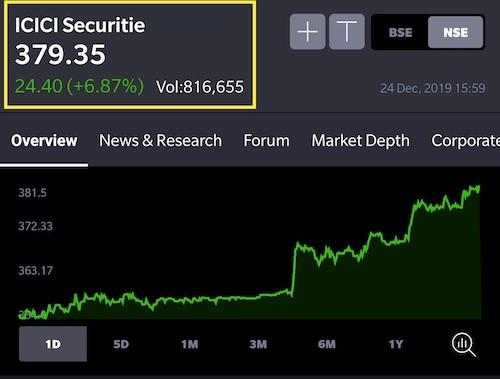LTP or ‘Last Traded Price’ is the price at which the last order was executed between a buyer and a seller.
For example: you buy a share of ‘ICICI Securities’ and the moment your order gets executed, the price that you bought it for, becomes the LTP.

The LTP can constantly keep changing during market hours, because a lot of people buy and sell shares every minute.
More detailed explanation:
The price of a stock is not decided by the company or stock exchange. It’s the buyers and sellers who decide the price.
People who have shares to sell give a price that is acceptable to them. Those who want to buy shares, offer a price they are willing to pay to buy the stock.
The Stock exchange (NSE or BSE) then match buyers and sellers, which is visible in your trading application with Zerodha or any other broker.
The seller sees the price a buyer is willing to pay. The buyer also sees the price a seller is willing to sell their shares. When both agree on a particular price, the trade gets executed.
Once the sale is done, the price at which it was executed for, becomes the last traded price or LTP.
For example, you go to a nearby vegetable market. You want to buy tomatoes. The vegetable vendor says ₹ 30 per kilo. You say you are willing to pay ₹ 25. Finally, after bargaining, both the vendor and you agree on ₹ 28 as the final price. The purchase is made. In stock market terms, the trade is executed and ₹ 28 is the LTP.
Why LTP important?
The reason why LTP is important is because almost all the prices that you see during market hours on business news channels, Moneycontrol, Google Finance and other websites is the ‘Last Traded Price’.
When you are watching a business channel and the scrolling ticker at the bottom of the screen shows the price of Asian Paints as ₹ 1800.45, it’s the last traded price of the share. However, do note that LTP can change every second and the price shown on TV channels may not be the latest.

Thanks for taking time for sharing this article, it was fantastic and very informative. as a first time visitor to your website